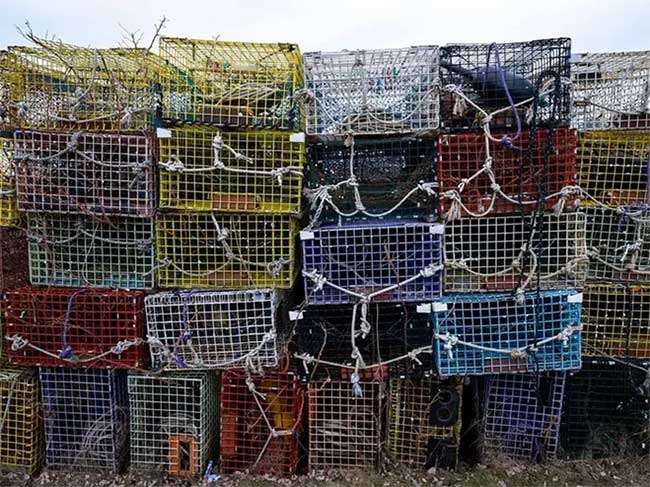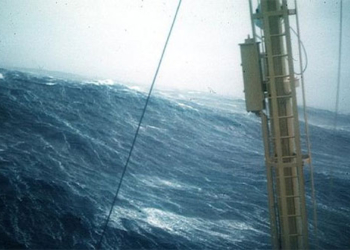Many shrimp businesses are outraged after conservation agencies in the land of the stars and stripes advised the public to stop eating American lobster, due to the fishing practices of this species posing a threat to the North Atlantic right whale.
The latest move by Seafood Watch – an organization that assesses the sustainability of seafood – to place American lobster on its “red” list has sparked a wave of backlash.
The strongest opposition is occurring in Maine, which is famous for its lobster industry. Seafood Watch’s action is equivalent to advising consumers to limit their use of these products.
The organization claims that using traditional fishing gear to catch American lobster endangers the North Atlantic right whale, a species at risk of extinction.
Seafood Watch is a well-known organization that has long provided guidance to businesses and consumers on the buying and consumption of seafood. Its recommendations have had a significant impact, and this time is no exception. Following the latest recommendation, many restaurants across the United States have also removed lobster from their menus.
Indirect Impact
There are various types of lobsters available in the market, such as spiny lobster and European lobster, but American lobster has recently become the favorite among many consumers.
Fishermen do not directly catch the right whales, but the gear used to catch American lobster indirectly threatens these whales.
Fishermen along the eastern shores of the U.S. and Canada still use traditional methods from the 1800s – placing bait in a trap and then dropping it into the water. They secure the trap to a buoy with ropes for easier retrieval.

Traditional lobster fishing gear using long ropes. (Photo: New York Times).
As a result, the whales can easily become entangled in the ropes, making it difficult for them to surface for air or dive deep for food. These ropes can entangle the whales for years, causing injuries and affecting their reproductive and growth capabilities.
“It is heartbreaking to see them stressed, struggling to escape from gear that is entangled around them in desperation,” said Amy Knowlton, a scientist at the New England Aquarium with 40 years of research on right whales.
Whale Species in Distress
Scientists estimate that there are currently only 350 North Atlantic right whales left, with fewer than 100 females. The National Marine Fisheries Service (NMFS) states that to prevent this whale species from going extinct, the number of whale deaths caused by human activities must be reduced to one per year.
In 2021, NMFS implemented new regulations for catching American lobster in U.S. waters. Under these regulations, fishermen must limit the placement of lobster trap lines in the habitats of North Atlantic right whales and use thinner ropes that whales can easily escape if they become entangled. The agency also announced seasonal closures of fishing grounds.
Seafood Watch and other marine conservation organizations have stated that the new regulations are a step in the right direction but still insufficient.

A right whale entangled in rope in 2021. (Photo: AP).
“On average, about 7.7 whales die each year due to human causes. Of these, 5.7 are due to entanglement, while the others are from vessel strikes,” said Sam Wilding, the fisheries program manager at Seafood Watch.
Mr. Wilding noted that state and federal fishery managers, along with industry leaders, have been seeking solutions to this issue for over two decades, but efforts have not been sufficient.
“The impact rate from fishing is much higher than our initial predictions,” he said.
Still Awaiting Solutions
Those in the fishing industry argue that Seafood Watch has gone too far in calling for consumers to stop eating American lobster.
“The way we manage fisheries has always been one of the best practices,” said Kristan Porter, President of the Maine Lobster Association. “As a fisherman, all I can do is follow the rules.”
Meanwhile, Steve Train, a lobster fisherman with 40 years of experience, stated that he and other fishermen should not be penalized for the decline of the North Atlantic right whale, as they are still following regulations.

New fishing gear using remote-controlled technology will reduce the risk of right whales getting entangled compared to traditional gear. (Photo: NOAA).
One proposed solution is to switch to using rope-free gear, which is utilized in Australia and some areas of the U.S. It operates similarly to traditional lobster traps but is connected to a remote-controlled buoy, eliminating the need for ropes.
However, this equipment is not yet widespread and is costly, ranging from $2,000 to $4,000, compared to traditional gear that costs only $50 to $180.
Earlier this year, Democratic lawmakers proposed legislation to invest millions in the development and testing of rope-free gear and technology to help protect North Atlantic right whales. However, this legislation has yet to be voted on.
Seafood Watch recommends that while awaiting a viable solution, consumers should switch to spiny lobsters caught in Florida or California.
However, suppliers and retailers remain hesitant to reduce the sales of American lobster, as it provides significant economic benefits.




















































